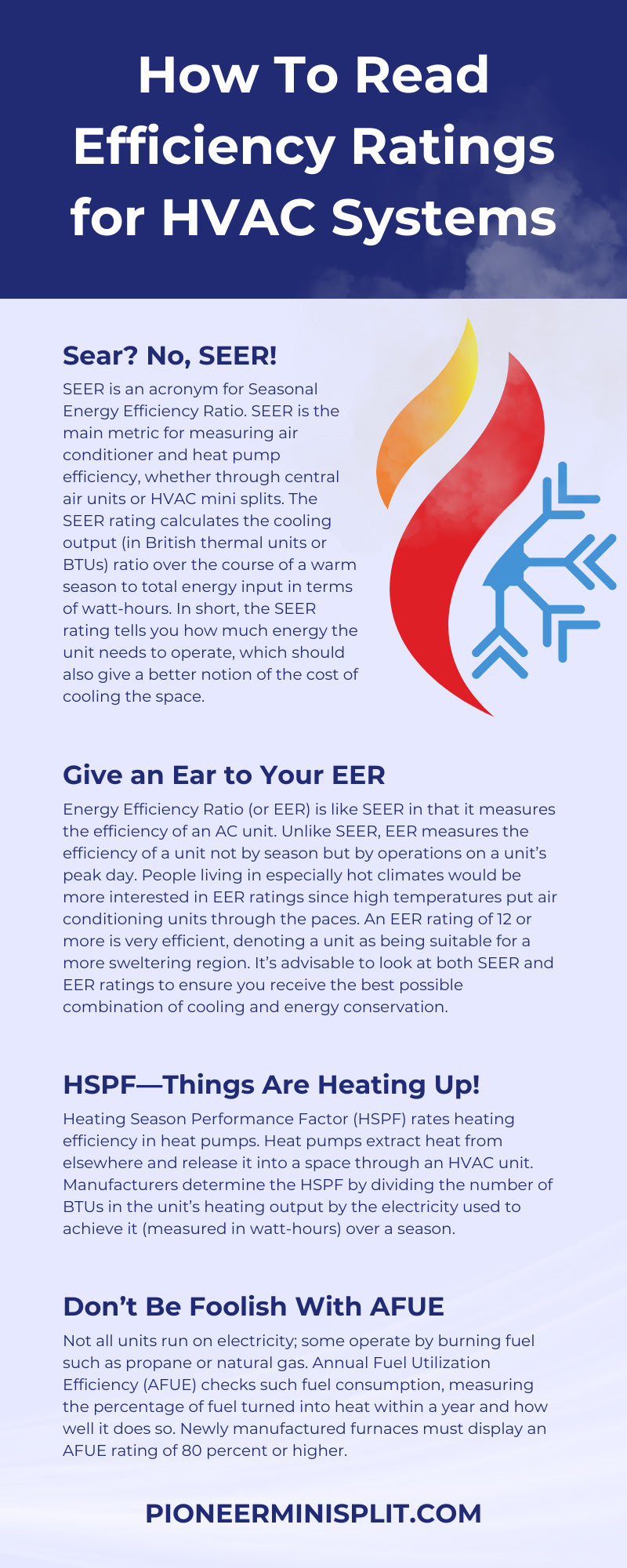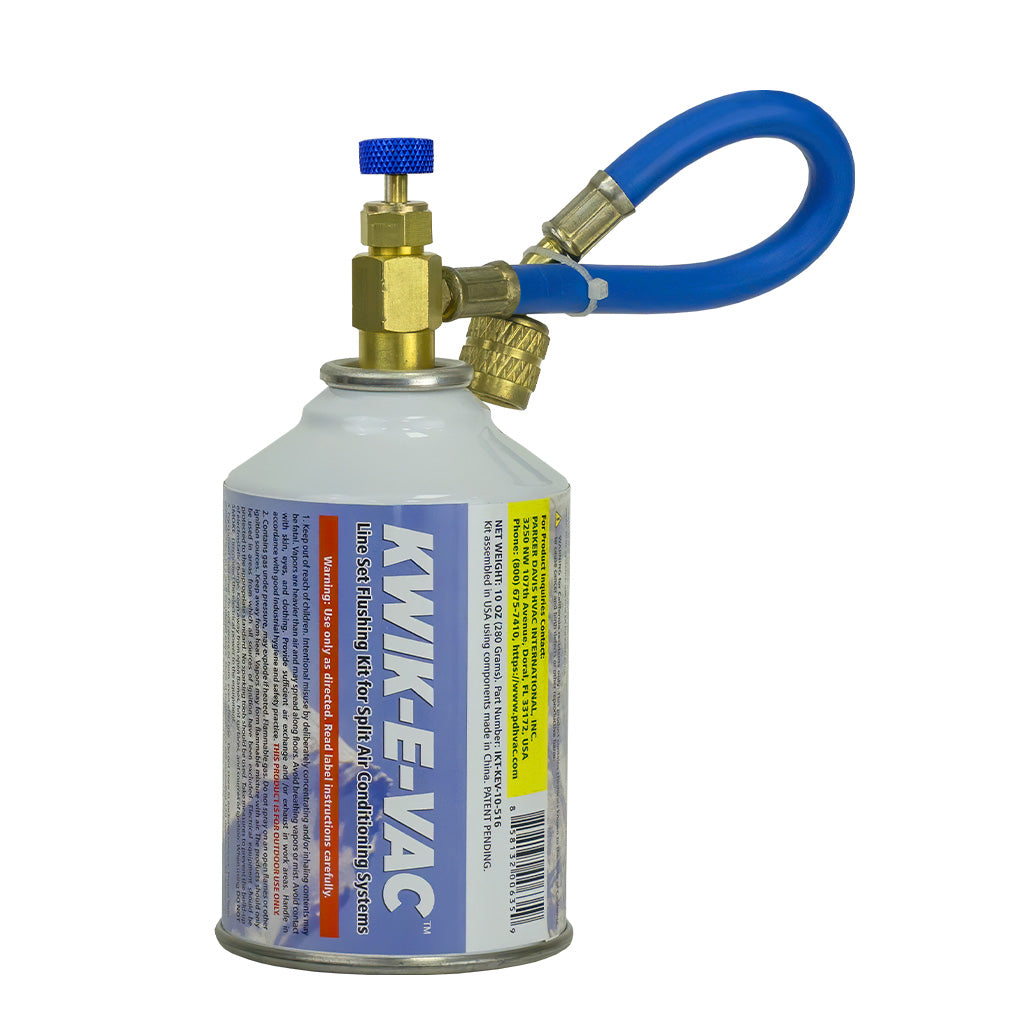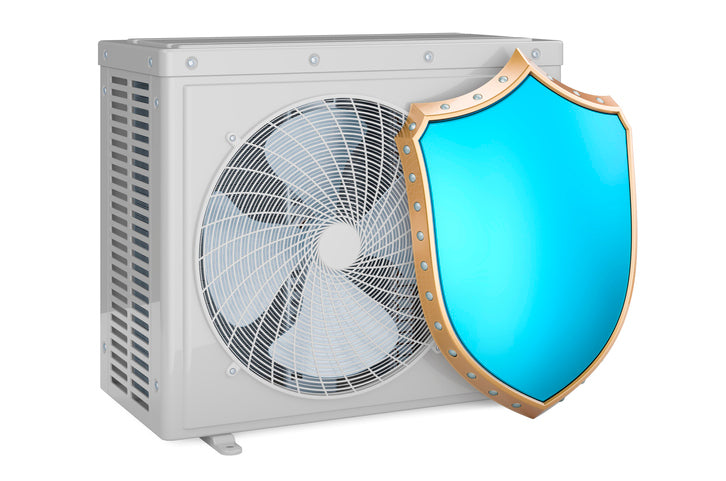How To Read Efficiency Ratings for HVAC Systems

If you’re considering purchasing a new heating, ventilation, and air conditioning system or have noticed the efficiency ratings noted on your current system, it pays to understand what they mean. Knowing what efficiency ratings are about can help you make more informed decisions about your energy consumption, saving money, and precious resources.
Use this brief but handy guide on how to read efficiency ratings for HVAC systems. Keep these ratings in mind if you plan to install a system, upgrade your current one, or simply want to know more about your system’s inner workings. They could save you money while saving the environment too.
Sear? No, SEER!
When you think of something being searing, you probably think of high heat on the oven or grill. A SEER rating has nothing to do with cooking. SEER is an acronym for Seasonal Energy Efficiency Ratio. SEER is the main metric for measuring air conditioner and heat pump efficiency, whether through central air units or HVAC mini splits. The SEER rating calculates the cooling output (in British thermal units or BTUs) ratio over the course of a warm season to total energy input in terms of watt-hours. In short, the SEER rating tells you how much energy the unit needs to operate, which should also give a better notion of the cost of cooling the space.
The United States Department of Energy mandates a minimum SEER rating of 14 for a unit. Some units can go much higher than that (25 or greater), but 14 is the standard. The higher the SEER rating, the more efficient the unit, which means a higher price but more savings on energy costs in the long run. A higher SEER rating isn’t necessarily the best choice for your space, but in general, the higher the rating goes, the better it works and the more it saves.
Give an Ear to Your EER
Energy Efficiency Ratio (or EER) is like SEER in that it measures the efficiency of an AC unit. Unlike SEER, EER measures the efficiency of a unit not by season but by operations on a unit’s peak day. People living in especially hot climates would be more interested in EER ratings since high temperatures put air conditioning units through the paces. An EER rating of 12 or more is very efficient, denoting a unit as being suitable for a more sweltering region. It’s advisable to look at both SEER and EER ratings to ensure you receive the best possible combination of cooling and energy conservation.
HSPF—Things Are Heating Up!
Let’s move on to the colder months when the AC switches off and the heating function of an HVAC unit turns up. Heating Season Performance Factor (HSPF) rates heating efficiency in heat pumps. Heat pumps extract heat from elsewhere and release it into a space through an HVAC unit. Manufacturers determine the HSPF by dividing the number of BTUs in the unit’s heating output by the electricity used to achieve it (measured in watt-hours) over a season.
Once again, the United States Department of Energy sets the standard. They determined that units should have a minimum HSPF rating of 8.2, but many units with HSPF ratings of 13 or more are available. As is the case with SEER and EER, a higher rating means greater efficiency, which translates into less energy consumed and/or wasted and greater savings overall. If you’re in a colder region, pick a unit with a high HSPF to ensure wintertime is comfortable for you and your family without letting your bank account take a big hit.
Don’t Be Foolish With AFUE
Not all units run on electricity; some operate by burning fuel such as propane or natural gas. Annual Fuel Utilization Efficiency (AFUE) checks such fuel consumption, measuring the percentage of fuel turned into heat within a year and how well it does so. Newly manufactured furnaces must display an AFUE rating of 80 percent or higher. As an example of how simple AFUE is to understand, an 80 percent rating reflects the fact that the furnace converted 80 percent of the fuel into heat. The higher the AFE, the more efficient the system. If you live where the temperature drops swiftly during the winter months, look for a higher AFUE rating that will help you stay warm and save money.
Hey There, You’re an Energy Star
Most people have probably encountered the Energy Star logo on a major appliance such as a dryer, dishwasher, or other device. Energy Star Certification applies to HVAC systems as well. The United States Environmental Protection Agency awards Energy Star Certifications, determining if a device meets its standards for energy efficiency and performance. While all the above ratings reflect bare minimum requirements, Energy Star Certification is much stricter and more demanding. But with this certification, customers can trust that they’re picking one of the more efficient HVAC systems out there. These devices go above and beyond in terms of saving energy and providing comfort.
What’s Next?
Hopefully, this article has cleared up any mysteries about all those abbreviations and acronyms found on your HVAC system and its owner’s manual. It may seem overly simplistic to say that the bigger the number, the better the performance, but it’s generally true. Still, you should weigh that efficiency against the cost of the unit and installation. You can make a more informed decision, saving money at the outset as well as over the many years you use your system. And if you’re concerned about its effects on the environment, you can rest easy there too. A higher efficiency rating shows that a system uses less power to keep you and your family comfortable.
That’s a quick and easy breakdown on how to read efficiency ratings for HVAC systems. If you have further questions, contact us for a consultation on how our mini split systems and other products and services can keep you comfortable while lowering your bills. Reach out to us today; we look forward to speaking with you about your options!








